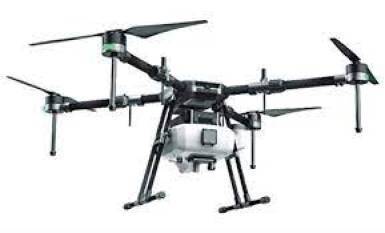NEW DELHI, 7 June 2023: India is one of the world's leading agricultural producers, but it is also a country with a large number of small farmers.
These farmers often face challenges such as water scarcity, pests, and diseases. Drones can help to address these challenges and improve the efficiency and productivity of agriculture in India.
Drones can be used for a variety of agricultural tasks, including:
- Crop spraying: Drones can be used to spray pesticides and fertilizers on crops. This can help to reduce the use of labor and improve the accuracy of spraying.
- Soil analysis: Drones can be used to collect data on soil health. This data can be used to improve fertilizer and irrigation practices.
- Crop monitoring: Drones can be used to monitor crops for pests, diseases, and water stress. This early warning can help farmers to take action to protect their crops.
- Precision farming: Drones can be used to collect data on individual fields. This data can be used to create customized farming plans for each field.
The use of drones in agriculture is still in its early stages, but it is growing rapidly. The Indian government has recognized the potential of drones in agriculture and has introduced a number of policies to promote their use.
10 Years of Market Outlook for Agri Drones in India
The market for agri drones in India is expected to grow rapidly in the next 10 years. The market is expected to reach $1 billion by 2030. The growth of the market is being driven by a number of factors, including:
- The increasing adoption of precision farming techniques
- The growing demand for organic and sustainable farming
- The government's support for the use of drones in agriculture
How Drones Can Change the Agriculture Sector and Increase Farmers Income
Drones have the potential to revolutionize the agriculture sector in India. They can help to improve the efficiency and productivity of agriculture, which can lead to increased farmer income. Drones can also help to reduce the use of pesticides and fertilizers, which can have a positive impact on the environment.
The use of drones in agriculture can help to:
- Increase crop yields
- Improve crop quality
- Reduce the use of pesticides and fertilizers
- Conserve water
- Reduce labor costs
- Improve farm management
These benefits can lead to increased farmer income and a more sustainable agricultural sector.
India Government Agriculture Initiatives
The Indian government has recognized the potential of drones in agriculture and has introduced a number of policies to promote their use. These policies include:
- The National Agricultural Drone Mission (NADM): The NADM is a government-funded program that aims to promote the use of drones in agriculture. The program provides subsidies for the purchase of drones and training for farmers on how to use them.
- The Drone Kisan scheme: The Drone Kisan scheme is a government-run program that provides loans to farmers for the purchase of drones. The scheme also provides training for farmers on how to use drones.
- The Agricultural Drones and Robotics (ADR) policy: The ADR policy is a government policy that provides a framework for the regulation of drones in agriculture. The policy aims to promote the safe and responsible use of drones in agriculture.
These government initiatives are helping to promote the use of drones in agriculture and are helping to improve the efficiency and productivity of agriculture in India.
Conclusion
Drones have the potential to revolutionize the agriculture sector in India. They can help to improve the efficiency and productivity of agriculture, which can lead to increased farmer income. Drones can also help to reduce the use of pesticides and fertilizers, which can have a positive impact on the environment. The Indian government is recognizing the potential of drones in agriculture and is introducing a number of policies to promote their use.




















